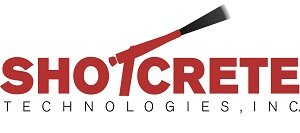Mumbai, India - Storm Water System Repairs
In July of 2012, Shotcrete Technologies, Inc., was contacted by Michigan Engineers Ltd. of Mumbai, India to provide technical expertise, training, and Robotic Shotcrete Systems to rehabilitate portions of the aging Storm Water System in Mumbai with Shotcrete.
The city of Mumbai, India with its’ teaming millions of inhabitants has been experiencing numerous failures of its’ one hundred year old plus storm water system. Badly collapsed areas have affected traffic during peak hours, and bursting sewer pipes have created further cave- ins with disastrous effects. The old brick lined system is badly in need of preventative maintenance, repairs, and reconstruction.
The first phase of this massive project identified particular areas to be repaired---mainly storm water drains and sewer lines that need urgent attention or they will fail. The most common problem is leakages within the system causing erosions, or the sewer lines choke up, culminating in a road collapse (sink-hole).
Delinking sewer and storm water drainage systems are also goals of the project. Thus reducing coastal pollution and environmental hazards created when flooding occurs through the storm water system.
Michigan Engineers Ltd. was awarded an initial contract to rehabilitate sixteen different sizes and shapes of storm water tunnels in old Mumbai near the central rail station. The pipes ranged in diameter from 1.5 m (4.5 ft.) to 4.5 m (14 ft.) and were of various shapes—oval, horseshoe shaped, round and box culverts with lengths varying from 16 m. (50 ft.) to 2400m. (7500 ft.) Specifications called for a Shotcrete lining from 50 mm- 200 mm thickness (2” – 10”), with a total of 20,000 cubic meters (27,000 CY) of shotcrete to be applied.
The variety of shapes and sizes and challenging site locations called for a versatile application method, that was cost-effective, simple to operate, and that was mobile and relatively fool-proof.
To meet the needs of the client Shotcrete Technologies, Inc. provided three Shot-Tech Robotic Arms, one Model 350, and 2 Models 160, and one Robotic Shotlining system. These would provide the most flexibility and cover the necessary range of shapes, sizes and lengths. Transcrete Concrete Pumps were chosen for Shotcrete delivery through two inch hoses. To complete the system locally sourced Carriers were used to mount the Robotic arms.
To keep costs as low as possible, STI sent out technician to the site, and advised Michigan on what types of carriers sourced locally would be suitable for each Unit, and what types of locally fabricated parts could be used ---as much material and equipment as possible was sourced in locally.
Once the Shotcrete Units were delivered our technical personnel assisted Michigan engineers in mounting the units on the various types of carriers (see photo). Then crews were trained and the shotcreting began in earnest.
The 40 MPA (5800 psi) sand mix with 10% silica fume was designed to pump 100 plus meters to the nearest manhole, and then re-pumped another 200 ft. away. Concrete delivery is challenging-- during the day, traffic (both pedestrian and vehicles) is too congested and concrete delivery is nearly impossible. Work is now only performed at night between 9 pm and 7 am. With the proper mix, the Shotcrete is often pumped hundreds of meters at a time.
As anticipated, the Shot-Tech Robotic arms and System are proving their versatility and productivity in extremely challenging conditions. The 20,000 Cubic meters is anticipated to be complete in 150 working days

